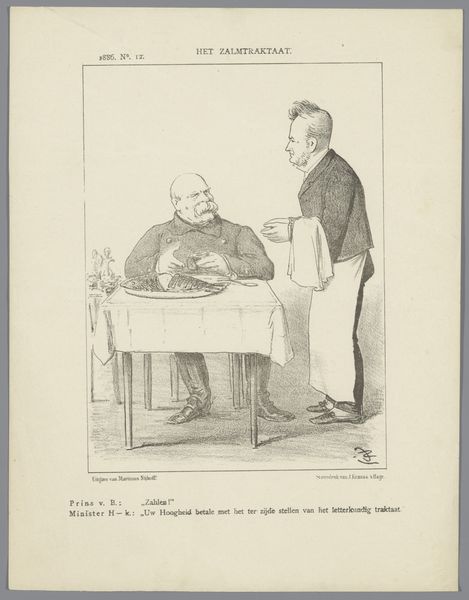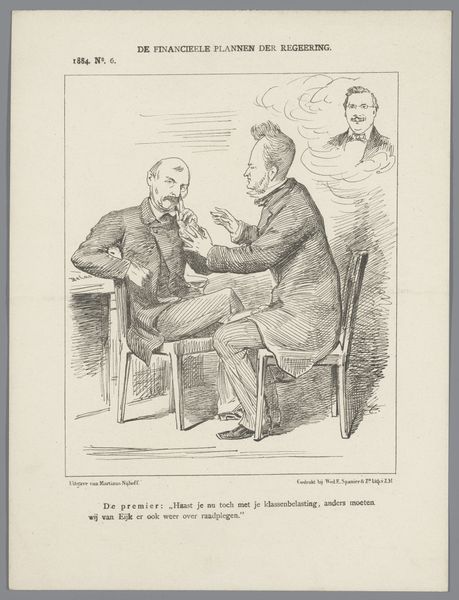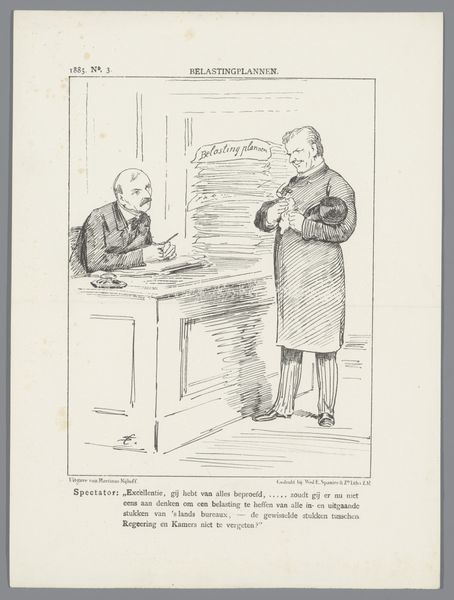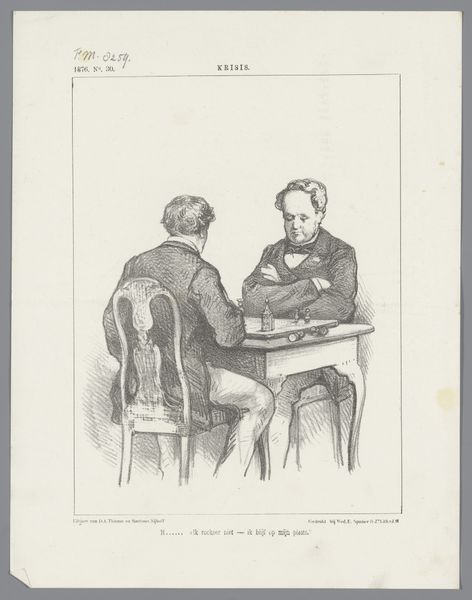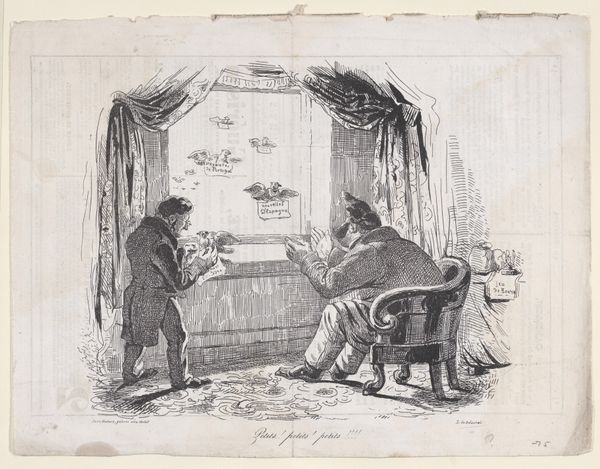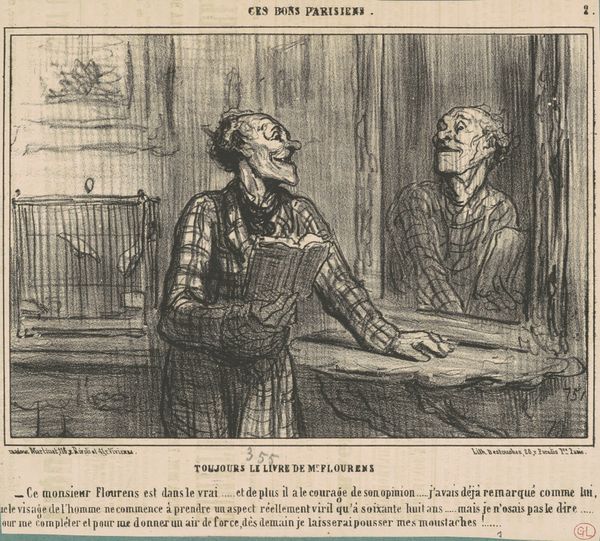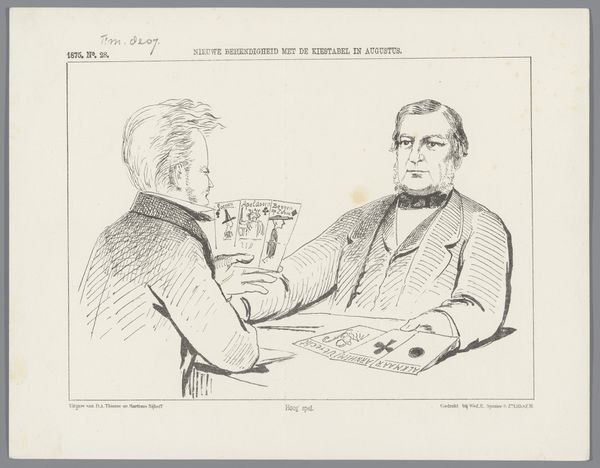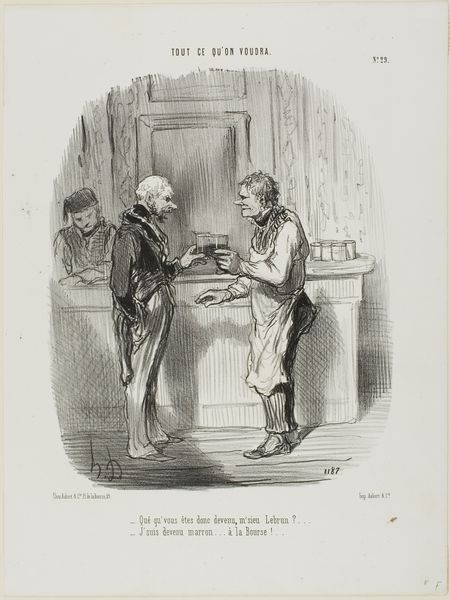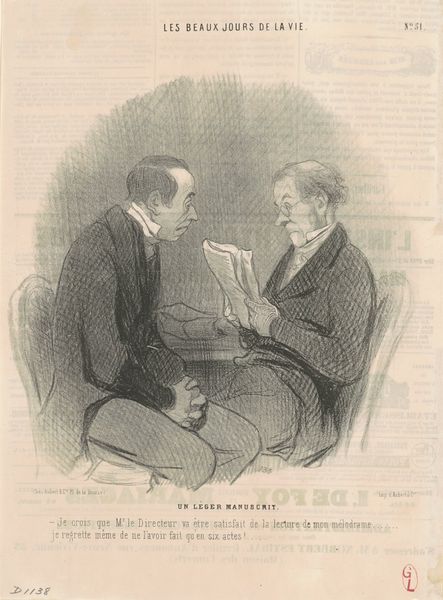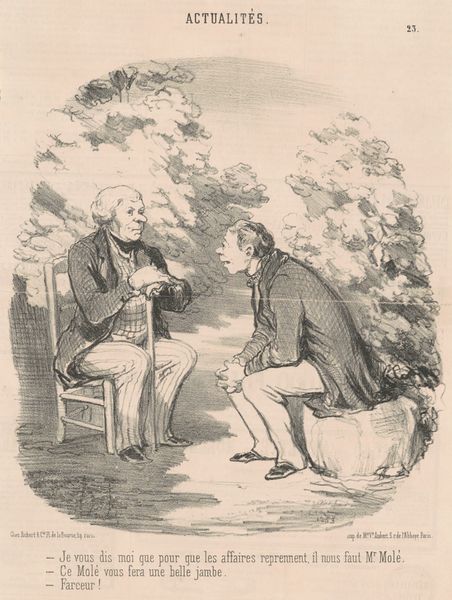
drawing, print, etching, graphite, pen
#
portrait
#
drawing
#
narrative-art
# print
#
etching
#
caricature
#
graphite
#
pen
#
genre-painting
Dimensions: height 215 mm, width 275 mm
Copyright: Rijks Museum: Open Domain
Editor: This is "Spotprent op Heemskerk en Gladstone," a drawing and etching from 1885 by Johan Michaël Schmidt Crans. It depicts two men at a table in what appears to be a tense discussion. The lines are incredibly detailed, especially in the cross-hatching used to create shading. What do you see in this piece, from your perspective? Curator: Intriguing! The formal elements of this print draw my attention first. Note the stark contrast between the two figures. One sits rigidly, arms crossed, almost swallowed by the chair. The other gestures emphatically with open hands, leaning forward. This contrast immediately establishes a power dynamic and suggests opposing viewpoints. How does the composition itself guide your eye? Editor: I notice the table is central, anchoring the two figures, but the tablecloth is rather haphazard, and a book is placed awkwardly on it. Also, they don't seem to be acknowledging each other. They're in the same space but appear completely isolated. Curator: Precisely. Observe the diagonal lines created by the table edge and the differing angles of their chairs. These conflicting lines introduce visual tension, which complements the tension suggested in the scene. Furthermore, the background is intentionally sparse, directing our focus to the figures and their interaction or lack thereof. Notice the stark lighting too and how the contrasting levels draw us in to see a dispute is likely unfolding. Editor: So, it's less about what's happening politically and more about how the artist uses visual tools to communicate tension and conflict? Curator: Indeed. The artist uses these formal elements to construct a narrative. Whether the subject is political figures matters less than the carefully constructed visual language employed. It is within those details we truly perceive and understand the intention of the artist and thus unlock some of the intrinsic values of the piece. Editor: That’s really insightful! I’m starting to appreciate how the formal aspects of the work carry as much meaning as the subject itself. Curator: And, appreciating that formal arrangement allows us a closer connection to understanding its conceptual design.
Comments
No comments
Be the first to comment and join the conversation on the ultimate creative platform.

